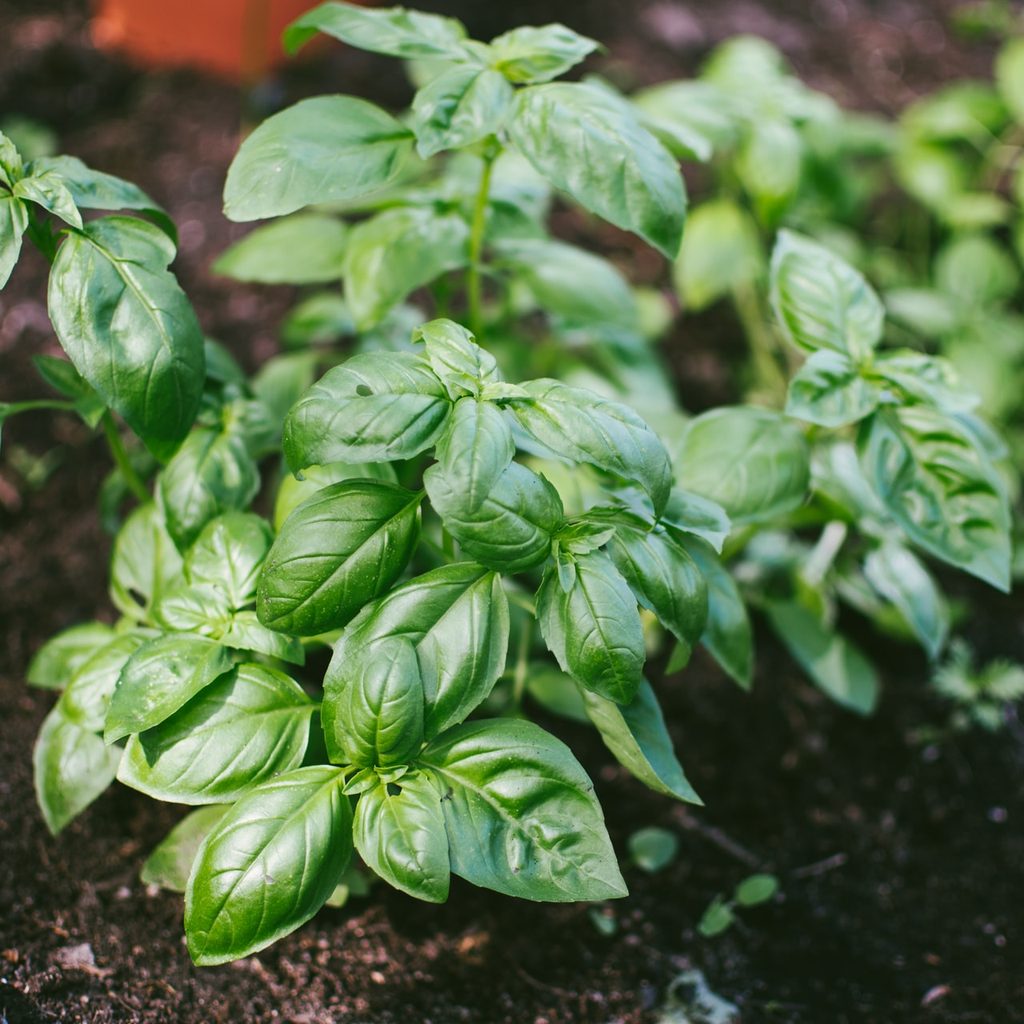The next time you head to your grocery store or farmers market to buy herbs, consider the fact that you may virtually never need to buy them again. That’s right, you can pretty much propagate any herb forever—with the help of some soil, water, and light, of course! This idea might seem revelatory, but it’s really all simple propagation techniques! Whether you grab a potted herb or a fresh sprig, we’re breaking down how you can turn your supermarket haul into an endless supply of garnish.

Growing potted herbs from the supermarket
Dividing your potted herb
In the produce section of most supermarkets, you’ll find potted herbs, such as basil and parsley, alongside fresh ones. While these plants at the supermarket look pretty much ready to go, it’s a good idea to divide them into three or four separate plants because they tend to be densely packed. While doing so might take extra effort, splitting up your potted grocery store herbs will give them room to grow healthy, robust leaves. All you have to do is squeeze the side of the plastic pot to pop your plant out. Then, take a sterile knife or pair of scissors to divide the roots. Set your plant into new planters with drainage holes, covering them up with a well-draining potting mix.
Planting your potted herb in a larger planter
Alternatively, you can loosen up the roots and plant the supermarket herb into a large planter with a drainage hole. Even if you go with this route, you can still trim the roots ever-so-slightly so that they can effectively deliver water and nutrients to the rest of your plant. Again, settle your herb into a well-draining potting mix.
Caring for potted herbs
However you go about situating your supermarket potted herb, water and feed it as you would any other container-bound plant. Herbs appreciate adequate moisture, so water your plant when the top one or two inches feel dry to the touch. To give it a boost, use a diluted, organic liquid fertilizer every other week throughout the growing season. Want the best growth possible? Leave your herb by a sunny windowsill in a warm area of your home. Here’s the most important step: pinch your plant back as soon as it starts pushing out new leaves! Pruning will encourage bushier growth, and you’ll be able to enjoy your herbs as delicious culinary garnish when you do it—that’s a win-win!

Growing supermarket herbs from cuttings
With herbs, you don’t even need to buy a potted plant. You can actually propagate herbs that you find in the produce section of your grocery store or farmers market. It’s that simple. With that said, not every herb will take to propagating. As you may have already guessed, the fresher your herb, the better its chances of survival will be—yellowing and blackening leaves won’t work.
How to propagate herb sprigs
When you have your herbs ready to go, start the propagation process by pinching off the last two to three inches of leaves at the bottom of your herb. (Make sure to leave a few tufts of leaves at the top so your plant can photosynthesize!) Take a clean pair of scissors and trim the stem at the bottom at a 45-degree angle—this cut will increase the surface area for another node to grow roots. After you’ve prepared your herb cuttings, drop them into a clear cup with clean water and leave them in a warm, bright corner of your home. Don’t forget to change the water every few days—algae may grow in your cup if you don’t. In two weeks, you should start seeing roots form in the water.
How to transplant your cuttings
Technically speaking, you can leave your herb in the water, but it might not grow as vigorously unless you transplant it into nutrient-rich soil. For planting herbs as houseplants, take the cuttings and bring them into a new planter with a drainage hole. Essentially, the care instructions here will be the same as tending after a potted plant that you find at the supermarket: Give your herbs plenty of bright light, water them when the top few inches of their soil dry out, and prune them often.
For annuals such as basil, dill, and lemongrass, you only have one growing season. But fret not. What you can do is take cuttings as your herbs grow throughout the year. You can also wait until your herb bolts and grab seeds to replant again come next spring. After you buy one herb, you really don’t need to buy more of it—the magic of propagation allows you to keep creating new plants!
Propagating herbs from your grocery store haul really is that easy. Grabbing a potted herb will require slightly less time and effort on your part, but starting from a fresh herb sprig isn’t all that difficult. Add your herb cutting to water, let it grow roots, and stick it into a potting mix.
Voilà: You’ve got fresh herbs for days on end!


